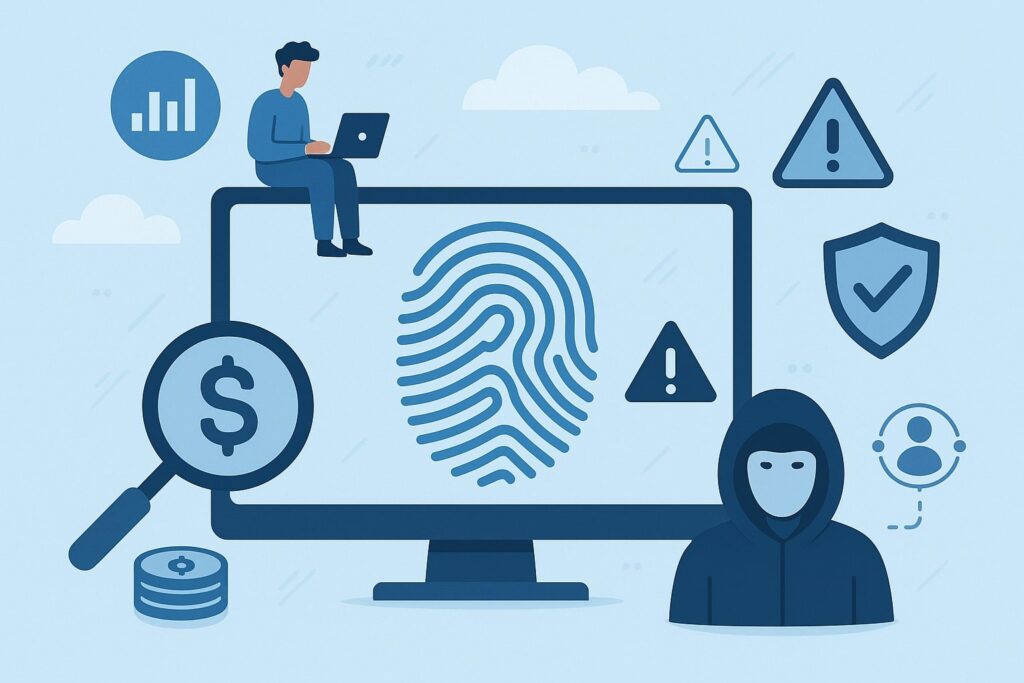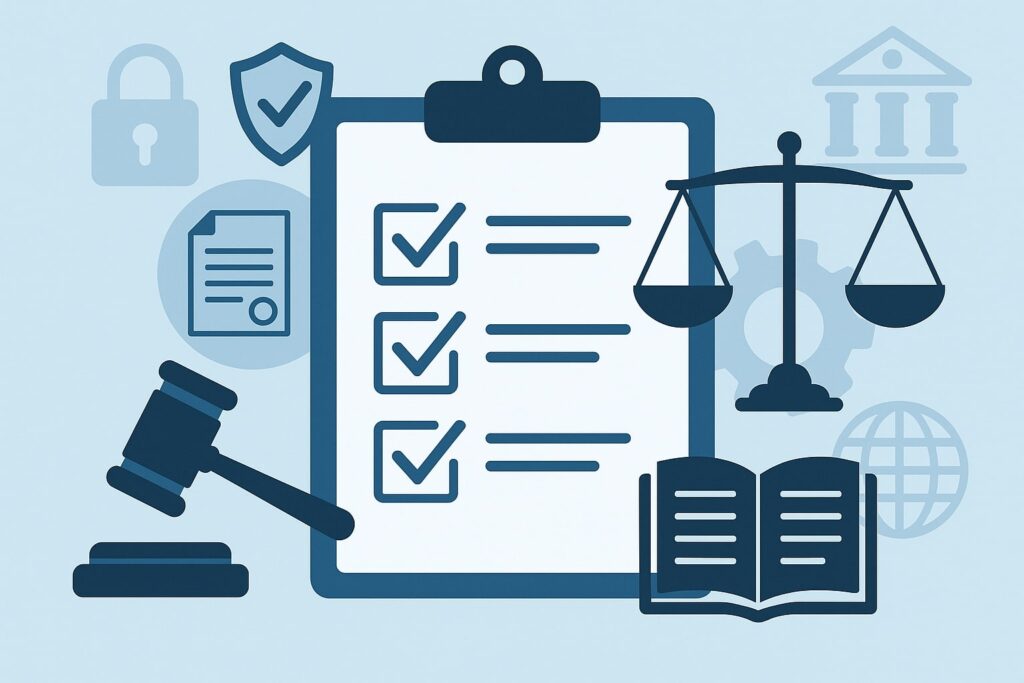
Real-Time Transaction Monitoring Systems
Real-time transaction monitoring continuously analyzes financial transactions as they occur to detect fraud, money laundering, and other illicit activity instantly. Unlike traditional overnight reviews, real-time systems flag suspicious transfers or payments the moment they happen.
This proactive approach helps banks and fintechs catch anomalies (e.g. unusual spending, rapid transfers) immediately, reducing losses and compliance risk. As a result, real-time monitoring has become essential for modern financial crime prevention and AML compliance.
Financial institutions face heavy penalties if AML controls fail (over $5 billion in fines in 2021 alone). Strong real-time monitoring not only blocks fraud early but also demonstrates to regulators that a bank is serious about AML.
By quickly detecting large cash transfers or structured payments that match fraud patterns, these systems allow instant intervention before damage occurs. Over short, real-time monitoring protects revenue, reputation, and customer trust in an increasingly digital economy.
How Real-Time Monitoring Prevents Fraud

Real-time monitoring stops financial crime by spotting it as it happens. Systems ingest each transaction and apply sophisticated rules, risk scores, and AI models to flag anomalies in milliseconds.
For example, if a customer’s account suddenly sends multiple large wire transfers, the system can alert investigators or even freeze the funds immediately. In practice, this means fraud that might once have gone undetected overnight is caught instantly.
- Immediate Alerts: Transactions are checked against fraud rules live. Suspicious patterns (e.g. rapid large withdrawals) trigger alerts the moment they occur. Investigators see these alerts in real time instead of finding out hours later.
- Adaptive Machine Learning: Modern platforms use AI models trained on past fraud. These models analyze transaction streams for subtle anomalies (like unusual transaction velocity or new device use) that simple rules might miss.
The machine-learning engine continuously learns from new data, improving detection as fraud tactics evolve. - Reduced False Positives: By comparing current transactions to a wide context (customer history, peer group, external data), intelligent monitors cut down on false alarms.
For example, predictive analytics can reduce irrelevant alerts by ~40% compared to rule-only systems. This saves investigators’ time and focuses resources on true fraud cases. - Risk-Based Prioritization: Every transaction can be scored by risk, combining factors like customer profile and transaction type.
High-risk payments (e.g. large international transfers) get extra scrutiny immediately, while low-risk ones pass through smoothly. This dynamic risk approach ensures fraud teams concentrate on the biggest threats.
Together, these real-time controls create a security net that continuously watches transaction flows. In contrast to legacy AML systems that batch-analyze yesterday’s data, real-time monitoring intercepts fraud in-flight.
As fintech expert Simon Taylor notes, this prevents money from “getting stuck in limbo” and allows compliance teams to act quickly. In short, institutions can block scams and account takeovers immediately, greatly reducing financial losses.
Compliance and Regulatory Requirements

Real-time monitoring also serves regulatory compliance. Financial regulators globally require banks to monitor transactions for money laundering and report suspicious activity. For example, the U.S.
Bank Secrecy Act (BSA) mandates Suspicious Activity Reports (SARs) when transactions seem illicit, and EU Anti-Money Laundering Directives set strict monitoring obligations.
Real-time systems automate this by logging every transaction and flagging AML-red flags on the spot. By continuously analyzing flows, banks can file SARs faster and demonstrate a risk-based approach to regulators.
Key regulations highlight the need for robust monitoring. The EU’s 6th AML Directive (6AMLD) and upcoming AMLCFT law require banks to identify ultimate beneficial owners and unusual patterns.
The U.S. AML Act of 2020 strengthened risk-based controls and beneficial-ownership reporting. Meanwhile, global bodies like FATF emphasize a risk-based, technology-enabled approach.
Even payment regulations touch this area: for example, PSD2 in Europe mandates strong customer authentication, and the Payment Card Industry’s PCI DSS requires secure monitoring of card data. Though not all rules explicitly say “real-time,” these frameworks push banks to watch transactions “around-the-clock” and act swiftly.
Real-world enforcement shows the stakes. When banks fail to monitor properly, fines can skyrocket – more than $5 billion in AML penalties were levied worldwide in 2021. Regulators expect continuous oversight, not just end-of-day checks.
A Celent report observes that while AML systems historically ran on batch cycles, the rise of instant digital payments is “driving demand for real-time behavior detection in AML”.
Financial authorities increasingly look for evidence of instant fraud controls; for instance, the U.S. Fed’s new FedNow instant payment network is planning configurable real-time fraud controls and requires banks to report incidents immediately.
Table: Batch vs Real-Time Monitoring
| Aspect | Batch Monitoring | Real-Time Monitoring |
|---|---|---|
| Timing | After transactions (hours/days later) | Instant analysis as transactions flow in |
| Latency | High (end-of-day processing) | Low (milliseconds) |
| Primary Use | Post-facto AML review, compliance reporting | Live fraud blocking, instant risk scoring |
| Alert Action | Manual review, delays in response | Immediate automated alerts and holds |
| Regulatory Fit | Meets baseline AML reporting (SARs) | Exceeds requirements, supporting regulators’ expectations |
Technical Architecture and Components

Building a real-time monitoring system requires modern, event-driven architecture. At the core is a streaming data pipeline that ingests every transaction as an “event.” In many implementations, a messaging platform like Apache Kafka acts as the central hub.
Kafka reliably collects and distributes transaction events from various sources (banking databases, payment gateways, APIs) in real time. Its high throughput and fault-tolerance ensure no transaction goes unseen, effectively serving as a “central nervous system” for the monitoring application.
Once transactions are in the stream, a stream processor or rule engine takes over. For example, Apache Flink or similar tools analyze each event against hundreds or thousands of AML/fraud rules and ML models.
Flink can execute complex stateful computations on the fly – such as maintaining per-account summaries, detecting patterns across multiple events, or applying dynamic risk scores. Because it processes data continuously, Flink can trigger alerts in sub-seconds when conditions (like a transaction exceeding velocity limits) are met.
Other components include:
- Rule Engines: Predefined scenarios (e.g., “large cash deposit followed by immediate withdrawal”) encoded as executable rules. These run in real time alongside ML.
- Machine Learning Models: Anomaly detectors or predictive models that score risk. Trained on historical fraud cases, they evaluate live transactions to spot new fraud tactics.
- Risk Scoring: Each customer and transaction is assigned a risk rating. This uses data like customer profile, transaction history, geo-location, and external data sources. High-risk scores can automatically escalate alerts.
- Watchlist and Sanctions Checks: Integrated screening against live sanctions, PEP (politically exposed person) lists, and other watchlists. Modern systems even sync continuously with updated watchlists so matches can block or flag transactions instantly.
- Case Management: When an alert fires, the system logs it in a case-management module. This workflow tool helps compliance staff investigate and report issues. Real-time systems often auto-generate key information (risk narrative, relevant history) to speed investigations.
All these pieces communicate through APIs and message queues. A practical setup might be: a core banking system publishes each transaction to Kafka; a Flink (or Spark Streaming) job processes it with the monitoring logic; risk scores and flags are stored in a database; and an alert is pushed to a dashboard if needed.
Cloud infrastructures are common too – many banks deploy monitoring engines on AWS, Azure, or Google Cloud, using managed streaming services or serverless functions for scaling.
Kai Waehner, a data streaming expert, describes this approach: “Apache Kafka provides a scalable, event-driven messaging infrastructure that ensures AI agents receive a constant, real-time stream of events.”
In practice, Kafka handles millions of transactions per minute, with Flink (or similar) doing rapid analysis. This high-throughput, low-latency pipeline is what makes real-time detection feasible.
Key Features and Tools
- Data Integration: Pull in transaction data from core systems, payment networks, or APIs. This may involve adapters or connectors to different banking ledgers.
- Continuous Monitoring Engine: A rules/analytics server that processes the incoming stream. It evaluates AML thresholds, fraud rules, and ML scores on every transaction.
- Entity Resolution: Systems match transactions to the correct customer entity (even if multiple accounts exist). Advanced tools build dynamic networks of related accounts or linked parties for context.
- Alert Prioritization: Modern platforms color-code alerts by severity or expected risk, so compliance teams focus on the most critical ones first.
- Audit Trail & Reporting: Everything is logged. The system keeps an immutable record of transaction evaluation and alerts (important for regulators). It also produces SARs and reports based on flagged cases.
- Scalability & High Availability: Real-time monitoring must run 24/7 without downtime. Architectures use clustering and cloud failover to ensure no gaps. Low-latency design is crucial: even a few seconds delay can let fraud slip through.
In summary, a real-time monitoring architecture looks like a data stream flowing continuously through an analytical engine.
The system needs robust tech (streaming platforms, ML frameworks, large databases, etc.) and strong integration with banking infrastructure. When done right, it delivers instant insights on every transaction.
Business Benefits of Real-Time Monitoring

Implementing real-time transaction monitoring delivers tangible business advantages:
- Reduced Fraud Losses: By catching fraud while it happens, banks avoid large chargebacks and theft. Studies show that swift action on suspicious payments can prevent hundreds of millions in illicit transfers.
For example, an auto-detection that declines a suspicious wire instantly can save both the sender and receiver from loss, instead of letting funds “sit in limbo”. - Regulatory Confidence: Regulators take comfort in seeing proactive AML controls. According to industry experts, having real-time monitoring in place demonstrates seriousness about compliance.
This can translate into better examiner reviews and potentially lower fines. Even FI partners (e.g. correspondent banks) prefer to work with institutions that have strong AML programs. - Operational Efficiency: Automated monitoring reduces manual workloads. By intelligently filtering transactions, systems cut down false positives up to ~40%.
Compliance staff spend less time on mundane checks and more on high-risk cases. Automation also speeds up investigations: some systems auto-populate SARs and case summaries, improving productivity. - Customer Trust & Reputation: Customers value security. Banks known for preventing fraud can advertise stronger protections.
Avoiding a public money-laundering scandal also protects the brand. As Flagright notes, “a money-laundering scandal is the last thing any organization wants”. Real-time monitoring helps avoid those worst-case headlines. - Better Risk Management: Continuous monitoring allows a true risk-based approach. Banks can dynamically adjust scrutiny by customer risk level (high-risk clients under tighter real-time checks).
This flexibility can even enable new services: for example, instant payments or digital wallets can be offered with confidence because the system catches fraud on-the-fly.
In fact, analyses show that deploying real-time AML systems provides quantifiable ROI. One firm noted cost savings of 50% or more through automation and alert reduction. In table form, the benefits include improved decision-making and faster actions:
- Faster Response: When a high-risk transaction is flagged, the bank can respond immediately (block card, request customer ID, etc.) instead of waiting for nightly reports.
- Scalability: High-volume banks and fintechs processing millions of transactions per day can only maintain high compliance when the system scales. Real-time systems built on cloud architectures handle massive workloads without performance loss.
- Competitive Advantage: Early adopters of real-time monitoring often market it as part of their secure services. For fintechs, it can be a selling point (e.g. “we run anti-fraud checks on every payment instantly”).
Overall, the business case is compelling: banks that modernize their monitoring can both save money (by fraud avoidance and efficiency) and potentially make more (by attracting security-conscious customers and partners).
Real-World Examples and Platforms
Many leading AML and fraud-prevention vendors offer real-time monitoring solutions. These platforms combine the components described above into turnkey products. For instance:
- NICE Actimize SAM: A widely used AML suite. Its Suspicious Activity Monitoring (SAM) module executes scenarios with sub-second latency to detect fraud and money laundering.
Actimize touts machine learning “confidence activated” analysis that spots risks in real time. (NICE Actimize is industry-renowned; it won multiple awards for AML technology). - FICO Falcon Fraud Manager: Traditionally known for card fraud, FICO has extended its platform to real-time payments. Its ML models scan live transaction streams (including account-based payments) to catch anomalies.
FICO notes that fraud detection must operate in “real time or near-real time” and can flag issues like rapid withdrawals. - SAS Anti-Money Laundering: SAS offers a cloud-native AML solution used by hundreds of institutions. It features AI-driven network analytics.
Importantly, SAS builds customer/entity relationship graphs in real time: “our real-time network and entity generation capabilities empower you to uncover hidden relationships in real time based on the latest data without the need to execute long overnight batch jobs”. This real-time graphing helps expose complex laundering schemes instantly. - Microsoft/AWS Marketplace Solutions: Cloud vendors host real-time AML apps. For example, Microsoft’s Azure Marketplace lists tools that ingest live payment data, compare it to historical profiles, and flag deviations on the fly.
These turnkey cloud services claim to be “fully scalable” and integrate KYC, sanctions screening, and alert generation in real time. - Pay.UK Fraud Prevention Overlay (UK): In the UK, the Faster Payments operator is piloting an overlay service. Multiple banks share transaction data (anonymized) with select providers (Visa, Featurespace, Synectics).
The pilot’s ML models achieved a 40% uplift in fraud detection at a 5:1 false positive rate – i.e. significantly more fraud caught before it occurred. This collaborative example shows how real-time monitoring can be done at an industry level, not just within one bank. - FedNow (USA): The Federal Reserve’s new instant payment system will require participants to handle fraud in real time. Fed officials announced plans for “configurable fraud controls” where banks set velocity and value limits by customer segment.
In other words, FedNow will natively support real-time flags (e.g. automatically rejecting a payment if it exceeds a configured limit) to protect against instant-payment scams. - Others: Countless banks also build in-house solutions. Some use big data frameworks (e.g. Apache Kafka and Flink as noted above) to stream transactions into custom ML pipelines.
Regulators like FinCEN and AML associations encourage sharing typologies, so banks often update systems with the latest fraud patterns from industry consortiums.
Each platform and program highlights a trend: integration of monitoring across all channels. Traditional AML focused on wire transfers or large transactions. Now monitoring covers ACH, cards, SWIFT, mobile wallets, even cryptocurrencies in real time.
In crypto, for example, exchanges are moving toward instant AML checks (chain analysis, address screening) because even blockchain transfers can be assessed as they broadcast.
Together, these real-world cases show that both proprietary and SaaS solutions can deliver real-time monitoring. Key capabilities include ultra-fast rule execution, ML scoring, network analytics, and compliance workflows – all aiming to detect illicit transactions the instant money moves.
Challenges and Future Trends
Deploying real-time monitoring comes with challenges:
- Data Volume: Modern banks process thousands of transactions per second. Scaling infrastructure (messaging, compute, storage) is critical. Cloud platforms help, but legacy banking systems must adapt. Data engineers must ensure the streaming pipeline can handle bursts without losing messages.
- False Positives: Even with ML, vigilance is needed to tune the system. Too many alerts waste time; too few can miss fraud. Ongoing model retraining and rule updates are necessary, requiring data science and compliance collaboration.
- Privacy and Data Protection: Monitoring uses a lot of personal data. Regulations like GDPR require minimizing data retention and ensuring privacy. Some banks use privacy-enhancing tech (anonymization, encryption) to analyze transactions without storing sensitive details.
- Integration Complexity: Merging real-time systems with existing core banking can be hard. Banks often have siloed payment channels and legacy databases. APIs and middleware are needed to unify these into a single real-time feed.
- Skill Gaps: Real-time AML demands expertise in both fintech and data science. Recruiting compliance analysts who understand AI/ML (or vice versa) can be tough. Many organizations solve this by partnering with RegTech vendors or using curated solutions.
Looking ahead, several trends are set to shape the field:
- AI and Predictive Analytics: Expect even more AI. Predictive models will forecast risk before transactions post, and NLP (natural language processing) will analyze payment memos or external news.
Real-time systems will query up-to-date sanctions databases and PEP lists instantly via API. Behavioral scoring models will adapt to each customer on the fly, flagging anomalies in sub-seconds. - Open Banking and Data Sharing: PSD2-like frameworks allow secure data sharing (with consent). Banks may enrich transaction monitoring with open banking data or share alerts through consortium networks.
For instance, multi-bank fraud networks and shared watchlists will increase, so real-time alerts propagate across institutions. - Crypto and New Payment Rails: With cryptocurrencies booming, AML monitoring is extending into blockchain. Regulators (FinCEN, ESMA, FATF) are already pushing crypto exchanges to implement KYC/AML and transaction monitoring.
We can expect specialized real-time monitors for digital asset transactions, including DeFi, running alongside fiat payment monitors. - Advanced Technology: Emerging tech like homomorphic encryption or zero-knowledge proofs may allow monitoring algorithms to run on encrypted data, easing privacy concerns.
Also, as cloud AI services mature, even smaller institutions can plug into pre-trained fraud-detection APIs for real-time screening. - Regulatory Evolution: Regulators will likely start to expect some form of instantaneous monitoring, especially as instant payments and open banking grow. They may issue guidelines on “real-time AML” in the future.
Already, bodies like the UK’s Payment Systems Regulator incentivize firms to innovate (as with the overlay service).
In summary, real-time transaction monitoring is at the core of combating modern financial crime. Its architecture continues to evolve with data streaming, AI, and cooperation.
As threats become faster and more global, these systems will increasingly rely on cutting-edge tech and cross-institution collaboration. Financial organizations that keep pace with these trends will be best positioned to manage fraud risk and comply with emerging regulations.
FAQs
Q: What exactly is real-time transaction monitoring?
A: It’s a system that analyzes every financial transaction instantly as it happens. Using rules, risk models, and machine learning, it identifies suspicious activity in real time. Essentially, it gives banks a 24/7 watchguard that flags fraud the moment it occurs.
Q: How is real-time monitoring different from traditional AML checks?
A: Traditional AML checks often run overnight on accumulated data. Real-time monitoring, by contrast, processes each transaction on the spot. Celent notes that historically AML was “deployed on a batch basis…after the fact,” whereas fraud systems run live to stop crime immediately. So real-time means no delay between an event and detecting it.
Q: What technology makes real-time monitoring possible?
A: Modern systems use event-driven architectures. For example, Apache Kafka ingests streams of live transactions, and Apache Flink (or similar) runs analytics on each event. Combined with machine learning models and fast databases, this tech stack can score and flag each transaction in milliseconds.
Q: Do any regulations specifically require real-time monitoring?
A: Not explicitly—most laws (like the Bank Secrecy Act, EU AML Directives) require monitoring and reporting, not necessarily that it be real-time. However, regulators expect up-to-date, risk-based monitoring.
In practice, rules for instant payments (e.g. FedNow rules, PSD2) and AML guidance drive the industry toward continuous monitoring. Real-time systems help banks meet these requirements more effectively.
Q: Can real-time monitoring detect money laundering, not just fraud?
A: Yes. While fraud prevention focuses on individual transactions, AML monitoring looks for laundering patterns. Real-time systems can incorporate AML rules too (large layered transfers, behavior shifts).
As Sardine points out, combining fraud and AML monitoring gives a more comprehensive defense. The difference is mostly in focus: real-time AML can pause or require verification before funds move, rather than after the fact.
Q: What are the main benefits for customers?
A: Customers benefit from increased security with minimal hassle. Real-time monitoring means fraudulent transactions are caught before money disappears, and legitimate transactions aren’t delayed unnecessarily.
It can also speed up services like instant payments by ensuring they stay safe. Ultimately, it leads to safer accounts and greater trust in the financial system.
Conclusion
Real-time transaction monitoring is a critical tool for modern financial crime prevention and compliance. By continuously analyzing every payment and transfer the moment it occurs, institutions can block fraud on the spot and meet stringent AML requirements.
This instant vigilance significantly reduces losses, cuts down investigation workload, and builds confidence with regulators and customers.
Technically, these systems rely on streaming data architectures and advanced analytics (rule engines, machine learning, network graphs). They are evolving rapidly with AI and cross-institution data sharing, especially as instant payments and cryptocurrencies grow.
Leading platforms (from legacy vendors like NICE Actimize and SAS to cloud-based ML solutions) illustrate how real-time monitoring works in practice, safeguarding trillions in transactions globally.
As regulatory expectations and fraud tactics both rise, real-time monitoring will remain a must-have capability. Financial organizations that implement robust, up-to-date monitoring systems not only stay compliant but also gain a strategic advantage in trust and efficiency.
In an era where seconds can make the difference between catching a scam or a scandal, real-time transaction monitoring truly changes the rules of the game.